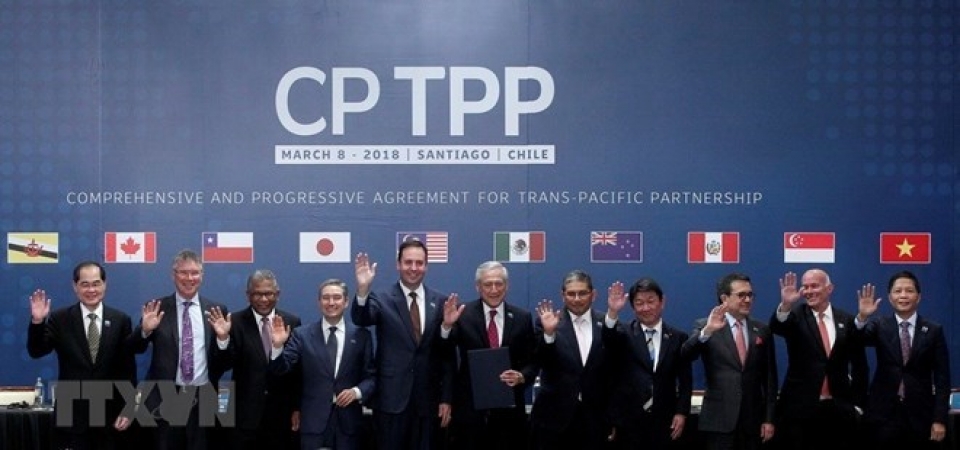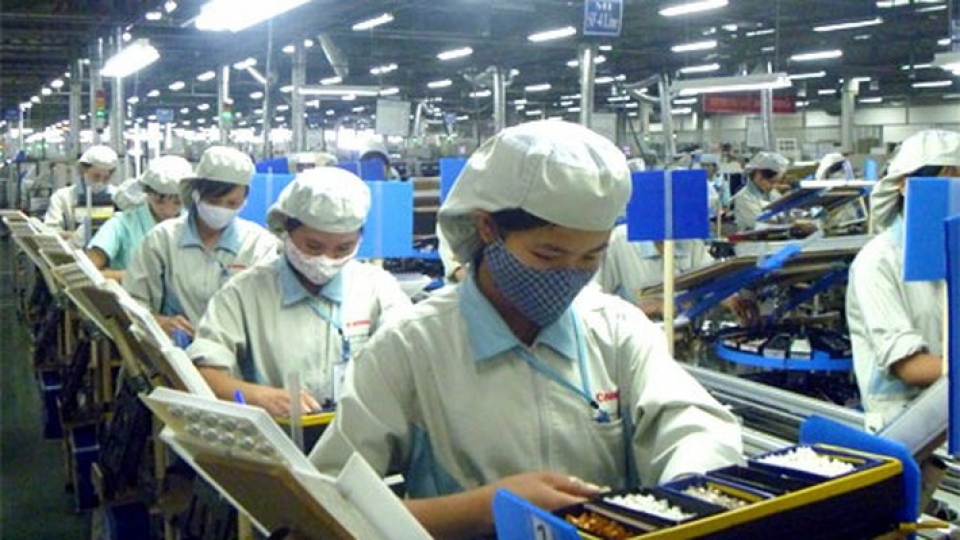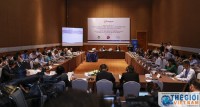
Opportunities and challenges in shifting economic climate
Latest
| TIN LIÊN QUAN | |
| PM Nguyen Xuan Phuc lays out six major tasks for 2019 | |
| Seeking solutions to oil price problem | |
While Vietnam is rapidly becoming the manufacturing base for South Korean investors such as LG and Samsung, due to the trade dispute between the US and China, manufacturers from China and Taiwan are starting to explore Vietnam as an alternative. With its lower cost of operations compared to China, Vietnam is an attractive destination for companies from the Greater China region. But does this put Vietnam within striking distance for tariffs from the US?
In the short term, Chinese companies exploring relocating manufacturing operations to Vietnam might be a boon for the country, with an influx of foreign direct investment (FDI) in northern Vietnam such as Haiphong, Thai Nguyen, Bac Ninh, and Quang Ninh provinces, where South Korean and Chinese companies have already attracted suppliers and subcontractors to house production.
However, Chinese companies looking to move manufacturing to Vietnam are focussed in garments and textiles or raw materials, and not hi-tech industries where Vietnam could benefit from technology and knowledge transfer. The competition for labour would also help drive down the capacity for Vietnamese suppliers who already lack resources and now may lose their labour supply to foreign investors who are willing to pay higher wages. This does not contribute to the ambitions of Vietnamese suppliers looking to join the global supply chain and become internationally competitive.
 |
| Warrick Cleine, chairman and CEO of KPMG in Vietnam and Cambodia. (Photo: VIR) |
In addition, goods from Chinese companies in Vietnam will face increased scrutiny from US regulators to ensure that products labelled as “Made in Vietnam” are not just materials exported to Vietnamese suppliers to circumvent US-imposed tariffs on Chinese goods. Vietnamese businesses should remain aware of the risks in order to avoid penalties in a protectionist trade environment.
KPMG has introduced a “Made in Vietnam” initiative to assist companies to transfer and expand manufacturing capacity in Vietnam. Vietnamese enterprises should avoid a get-rich-quick approach for engaging with the new investors. Instead, Vietnamese businesses should endeavour to create a long-term strategy to invest in sustainable manufacturing solutions, innovating products, optimising costs, and strengthening the supply chain and labour pool.
Taking advantage of regional free trade agreements and improving competitiveness
Over the past 25 years, Vietnam has enjoyed strong economic growth and benefitted from its increasing role in global trade. In recent years, Vietnam has matured as a confident player, negotiating the terms of its participation in bilateral and multilateral trade agreements with key trading partners in the region and internationally, with its entry into the World Trade Organization (WTO), the ASEAN Economic Community (AEC), and more recently, signing the European Union-Vietnam FTA (EVFTA) and the Comprehensive and Progressive Agreement for Trans-Pacific Partnership (CPTPP).
Taking the most recent examples of regional trade agreements, the EVFTA and the CPTPP, Vietnamese businesses can find substantial opportunities to break into regional markets. However, in order to take advantage, Vietnamese companies will have to step up their production quality to be competitive and comply with international standards.
Today, Vietnam is one of the world’s leading exporting countries, both in commodities, such as rice, coffee, pepper, and seafood, and more recently manufactured goods, such as footwear, garments, and electronics.
In March 2018, Vietnam signed the CPTPP agreement with 10 other Asia-Pacific countries. Vietnam’s market is considered as an attractive destination to investors from Japan and South Korea as a result of the CPTPP.
 |
| The Comprehensive and Progressive Agreement for Trans-Pacific Partnership was signed in Santiago, Chile, on March 8, 2018. |
Many economists have been stating in recent months that the CPTPP will bring great economic benefits and additional incentives for growth based on investment and exports. The CPTPP will also create favourable conditions for Vietnamese enterprises to exchange experience in management as well as promote innovation and science and technology transfer.
Currently, CPTPP countries constitute approximately 15.7 per cent of Vietnam’s export turnover and account for about 16 per cent of import turnover, creating a large market growth for trade in Vietnam. To be competitive in new regional markets, Vietnamese companies should focus on becoming self-sufficient and quality suppliers, and reduce dependence on intermediaries. By directly distributing products in foreign markets, Vietnamese suppliers will see an increasing export value and strengthen the “Made in Vietnam” brand.
Likewise, European governments and multinational corporations (MNCs) are showing they are ready to welcome Vietnamese suppliers who can prove quality control and will support training to enhance a supply chain from Vietnam.
The CPTPP is expected to contribute 1.1 per cent of GDP by 2030. The deal will benefit all income groups.
FTAs also bring more competition for Vietnamese companies
As Vietnam continues to embrace the forces of globalisation, Vietnamese companies will face greater competition from foreign companies, both inside and outside Vietnam.
Vietnam is seeing heated mergers and acquisitions growth as Thai, Japanese, and South Korean investors look to acquire local companies to enter the Vietnamese market. There is an important growth of Japanese and South Korean investors in the retail space, and Japanese and Singaporean investors in real estate.
 |
| Vietnamese companies will face greater competition from foreign companies, both inside and outside Vietnam. (Photo: VN Economy) |
National corporations and Vietnamese startups will need to continue to be fiercely independent as they innovate and grow their businesses inside Vietnam and overseas.
In conclusion, to mitigate the risks and benefit from the shifting global trade climate in the new year, Vietnamese companies invest in its young and optimistic labour force, in long-term solutions focused on quality control, and stepping up the production standards to export to international markets.
 | Workshop looks to boost SMEs’ participation in Industry 4.0 Opportunities and challenges facing small- and medium-sized enterprises (SMEs) in getting involved in the Fourth Industrial Revolution and global value chains were discussed at a ... |
 | CPTPP: Opportunities and challenges for Vietnam Vietnam’s core interests will still be ensured after the country joins the Comprehensive and Progressive Agreement for Trans-Pacific Partnership (CPTPP). |
 | ASEAN looks towards stronger community Deputy Foreign Minister Nguyen Quoc Dung has called on ASEAN member countries to deeply understand opportunities and challenges amid rapid changes in the region and ... |

























